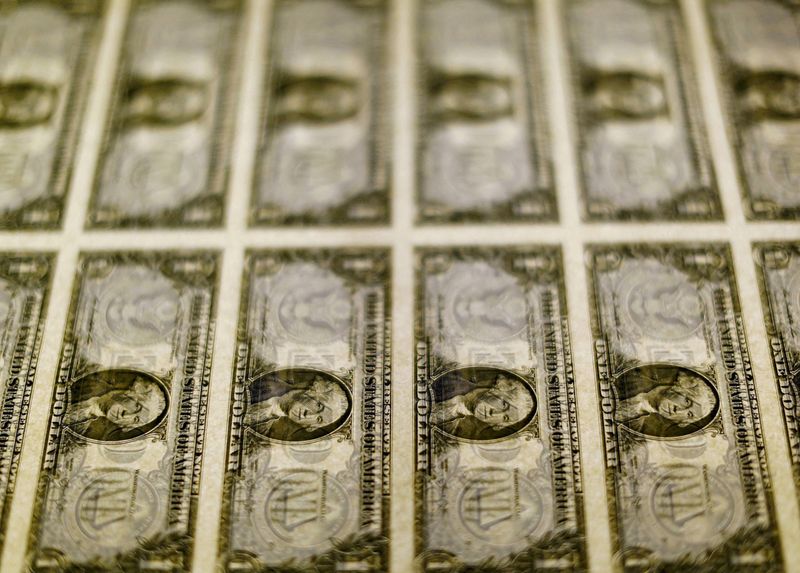Dollar eases after hitting highest in two weeks, US job data looms
By Stefano Rebaudo
(Reuters) -The dollar edged down on Monday but remained within striking distance of its highest level in almost two weeks as investors' focus moved to a U.S. jobs report due at the end of this week.
U.S. payrolls, due on Friday, will be crucial after Federal Reserve chair Jerome Powell pivoted from a battle against inflation to a readiness to protect against job losses.
Analysts say the job figures will determine the magnitude of the Federal Reserve's expected rate cut. Markets have already priced in for weeks a cut of 25 basis points.
The greenback advanced to its strongest since Aug. 20, buoyed by a rise in long-term Treasury yields to the highest since mid-August as inflation data pointed to a smaller rate cut and gross domestic product figures indicated the economy was on a solid enough footing to give the Federal Reserve room to be less aggressive in easing its policy.
Traders currently see a 33% chance of a 50-bps Fed rate cut this month, while fully pricing in a quarter-point cut. A week earlier, expectations were 36% for the larger reduction.
"These days, it is all about economic figures," said Athanasios Vamvakidis global head of forex strategy at BofA.
"We expect the dollar to weaken in the second half of this year, but the market shouldn’t get too excited about it," he added, flagging a euro target at $1.12.
"The U.S. economy is slowing but is still doing much better than the rest of the world."
The dollar index measure against six major peers weakened by 0.10% to 101.65, after hitting 101.79, a level not seen since Aug. 20.
It sank as low as 100.51 last week for the first time since July 2023 after Fed Chair Powell sent a strong message that the easing campaign would begin at the upcoming policy meeting.
The euro firmed 0.2% to $1.1068, after hitting $1.1043, its lowest since Aug. 19.
On the political front in Europe, the Alternative for Germany (AfD) was on track to become the first far-right party to win a regional election in Germany since World War Two, projections showed, giving it unprecedented power even if other parties are sure to exclude it from office.
"The only clear lessons are that the far-right AfD continues to resist the temptation of power until they get an outright majority," said Christian Schulz, deputy chief European economist at Citi.
Some investors worried that a political stalemate in Berlin and Paris could prevent Europe from moving forward integration initiatives, which could boost growth and make Europe able to play a bigger role in global affairs.
Money markets reduced their bets on rate cuts from the European Central Bank as August services inflation remained sticky and ECB policymakers provided no clues about additional monetary easing after a widely expected September rate cut.
They have priced in 59 bps worth of rate cuts by year-end -- implying two 25 bps move and a 36% chance of a third cut -- from 67 bps right after the release of German inflation data last week and from 70 bps in mid-August.
NON-FARM PAYROLLS
A U.S. public holiday on Monday makes for a potentially slow start to the week for the dollar, analysts said, but the following days will see a steady flow of macroeconomic data that culminates with the non-farm payrolls on Friday.
Economists surveyed by Reuters expect the addition of 165,000 U.S. jobs in August, up from an increase of 114,000 in the previous month.
Analysts said data at around consensus forecasts were consistent with a soft landing and the Fed easing its policy by 25 bps this month.
"With figures at or below 100,000, we will see risks of a hard landing and the market pricing in a higher chance of a 50 bps rate cut," BofA's Vamvakidis argued.
Treasury bonds won't trade on Monday due to the U.S. holiday, but the 10-year yield stood at 3.9110% following a 4.4-bp rise on Friday.
The dollar rose 0.40% to 146.74 yen.
Analysts argued it would be hard to see the dollar rally against the yen at a time when the Fed is about to cut rates.
Source: Investing.com
